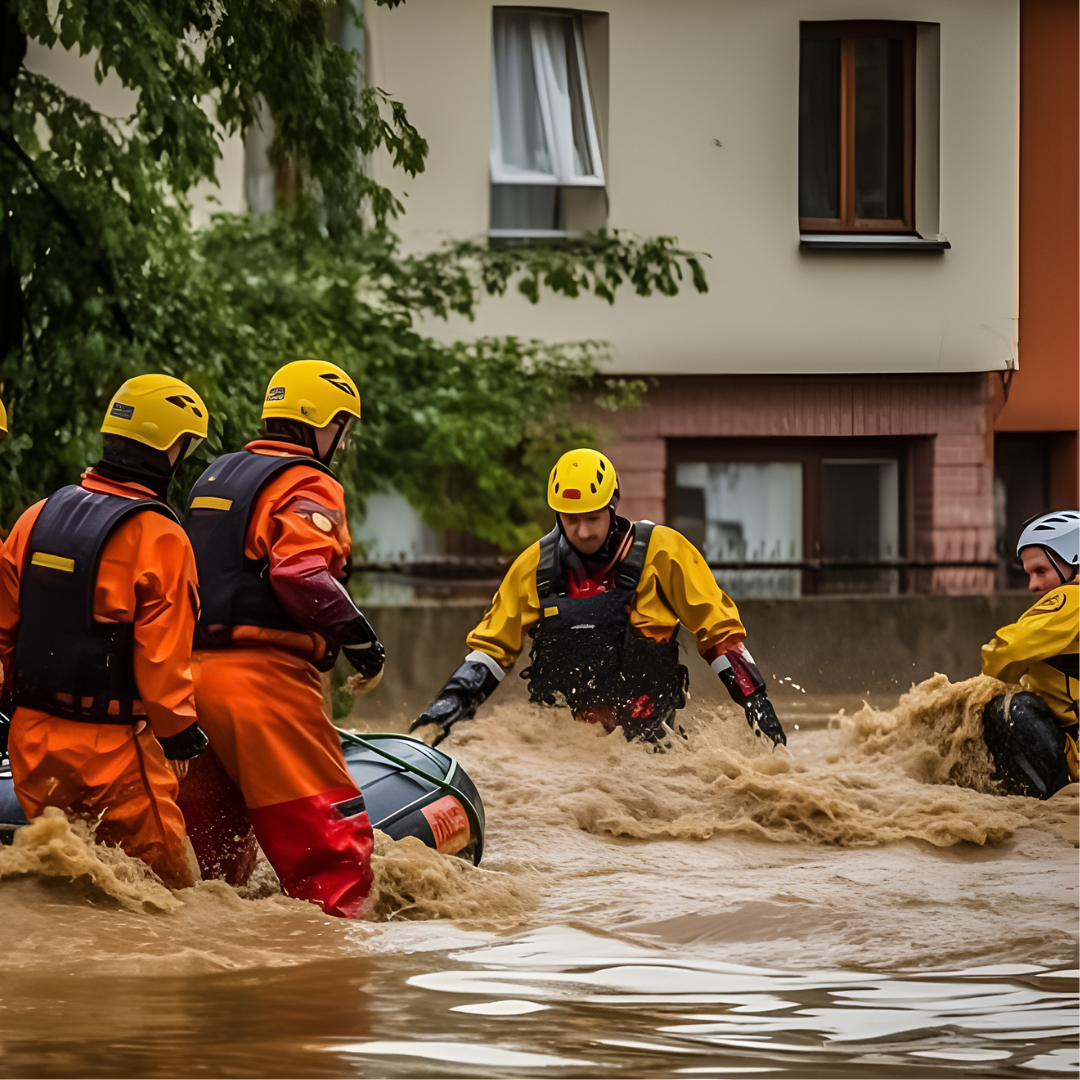Flood recovery: Lessons from Germany and Nigeria

Image by Freepik
Olasunkanmi Habeeb Okunola and Saskia Werners examine recovery efforts in Germany and Nigeria following the floods 2021 for The Conversation. Olasunkanmi Habeeb Okunola is an expert in disaster risk reduction and climate change adaptation, currently serving as a visiting scientist at the Institute for Environment and Human Security (UNU-EHS) at the United Nations University. Saskia Werners focusses on adaptation to global change in water management and is the Head of Section and Academic Officer at UNU-EHS.
Extreme climate events, floods, droughts, and heatwaves, are not just becoming more frequent; they are also more severe. It's important to understand how communities can recover from these events in ways that also build resilience to future events.
In a recent study, the authors analysed how communities affected by the extreme flood events of 2021 in Germany’s Ahr Valley and in Lagos, Nigeria, grappled with recovery from floods. The aim was to identify the factors, and combinations of factors, that served as barriers (or enablers) to recovery from disasters.
It was found that financial limitations, political interests and administrative hurdles led to prioritising immediate relief and reconstruction over long-term sustainable recovery.
In both cases, immediate and long-term recovery efforts were siloed, underfunded, and focused on reconstruction to pre-disaster conditions.
It was concluded from the findings that the success of recovery efforts lies in balancing short-term relief and a long-term vision. While immediate aid is essential after a disaster, true resilience hinges on proactive measures that address systemic challenges and empower communities to build a better future.
Recovery should not be merely action-orientated and building back infrastructure (engineering). It should also include insights in other areas, like governance and psychology, helping people to deal with losses and to heal.
What worked
To understand the recovery pathways of the two regions, the study authors reviewed relevant literature, newspaper articles, and government documents. We also interviewed government agencies, NGO representatives, volunteers, and local residents in the communities where these floods occurred.
The authors found that in Germany’s Ahr Valley, recovery wasn't just about rebuilding structures; it was about empowering individuals.
Through initiatives like mental health and first aid courses, residents learnt to support one another. This fostered a sense of community and resilience that was essential for meeting the emotional challenges posed by the disaster.
The focus on rebuilding with a sustainable vision also included environmental initiatives. For example, a type of heating system was put in place that didn't rely on fossil fuels.
Not only did this reduce carbon emissions, it also served as a symbol of hope. It showed there was an opportunity to create a more sustainable and environmentally friendly community.
In Lagos, Nigeria, too, residents found strength in community and innovation. Grassroots efforts using sustainable materials like bamboo and palm wood highlighted the ingenuity and resourcefulness of the people. Faith-based organisations provided material aid as well as emotional and spiritual support. This reinforced the bonds that held the community together.
Each community faced unique challenges. But they shared a common thread: the importance of adaptive governance, flexible decision-making, and strong community ties.
For example, established building codes in the Ahr Valley provided a framework for reconstruction, ensuring that new structures were resilient and safe.
In Lagos, the absence of strong government support highlighted the critical role of community organisations in providing services and fostering a sense of shared responsibility.
What needs improvement
In both the Ahr Valley and Lagos, the journey towards recovery has been fraught with obstacles as well.
In the Ahr Valley, bureaucratic red tape has become a formidable barrier. Residents, eager to rebuild their lives, find themselves entangled in a complex web of regulations and lengthy approval processes. This has delayed their access to insurance and recovery funds. Waiting for months or even years has eroded hope and fuelled a sense of abandonment.
Meanwhile, in Lagos, insufficient government support has left communities to fend for themselves, creating a breeding ground for uncertainty and conflict.
Land tenure disputes, fuelled by a lack of clear property rights, sow seeds of distrust and hinder resettlement efforts. Political disagreements complicate the picture, as competing interests divert attention and resources away from those who need them most.
In Lagos, none of the respondents reported having insurance to help them recover from disaster-related losses. While some residents in the Ahr Valley did have insurance, many were underinsured.
The Ahr Valley's building codes offer a framework for reconstruction. But it's clear that processes should be streamlined so communities can take ownership of their recovery.
In Lagos, the importance of robust social safety nets is clear. Partnerships between communities and authorities are also needed.
A different approach
Recovery isn't a separate process that occurs after disasters only. It should be seen as an essential part of managing risks. It's important to understand what recovery involves and what resources are needed.
This will help reduce future risks and increase resilience after extreme events. Governments should encourage flexible governance structures that value community voices and local knowledge to enable recovery. A good example is the New Orleans Recovery Authority, established after Hurricane Katrina. It involved local residents and city officials in planning and rebuilding efforts.
Grassroots efforts in Lagos demonstrated the power of sustainable materials and community-led initiatives. Seeing things from the community's point of view can help tailor solutions that fit the situation and adapt to evolving challenges.
Training and capacity-building programmes empower communities to be active in their own recovery.
Mental health and first aid courses were successful in the Ahr Valley. Equipping individuals with skills in sustainable practices and disaster preparedness helps weave a social fabric capable of weathering future storms.
This piece was originally published by The Conversation and can be found here.